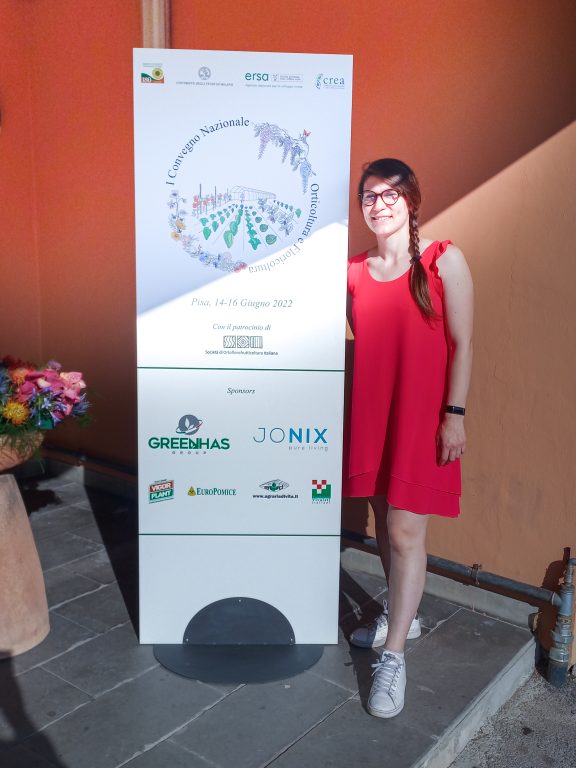Highlights from the I convegno orticultura e floricultura – The conference of horticulture and floriculture by Lisa Zamparo

I was excited to participate to the conference focused only on floriculture and horticulture (vegetable crop) organized by SOI (Horticultural Italian Society) and meet the community of Italian researchers that focus specifically on these two macro topics.
With this event, the conveners (Antonio Ferrante, Costantino Cattivello, Luca Incrocci, Daniele Massa) wanted to take stock of the situation on the past, present and future of the horticulture in Italy. The three days were filled of inspiring presentations by young and more experienced researchers, so they certainly succeeded in their intentions. Therefore, I thought a little sum up of the highlights of the day is certainly due.
Many were the topics of interest: the first day the focus was on overviews of the current market and academic situation of the floriculture and horticulture in Italy as well as globally. Very engaging was the floriculture overview by Daniela Romano going through the history of the subject and reached the current status and future possibilities, like the Flow Flower concept (local and wild species).
After the introductions and general overviews, the presentations were then divided by topic.
Regarding the quality of the productions, many interesting works were reported: from the micro-greens biofortification with selenium, to the use of wild species to produce the baby leaf with increased nutrition values, to the exposition of a projects carried on with a consortium of Italian research institutes with the goal of enhancing the competitiveness of vegetable crops with high service content (POFACS).
Particularly interesting, was the European project which involves different universities around Europe, with the goal of valorization, genetic improvement and development of organic production of local cultivars and wild species of vegetable crops. The project is part of the Horizon 2020 and includes 22 partners (www.breson.eu)
Additionally, insightful research by Michele Denora, highlighted that the possible limitations of reusing treated waste waters for agriculture for the semi-arid regions. It was mind blowing to realized that antibiotics, anti-inflammatory and other medicaments that everybody commonly uses, can contaminate the waters and some of them, can be taken up by the plants and stored in its parts.
The growing media were also included as on the main topics of the conference. The highlight of the event was the brilliant presentation by Costantino Cattivello, researcher that for the past 30 years has been working on growing media. He managed to captivate the public with his thoughts on the national and international dynamics of production and use of growing media: his speech explored the current and future volumes for the global and Italian situation, along with the importance that peat has currently and in view of the future volumes increase; the global fluxes of raw materials and finished mixes, highlighting the emerging countries for future changes; the consequences of the war in Ukraine along with the climate change impact on some specific raw materials; finally he exposed a reflection on the new raw materials, on the characteristics that make a product suitable as component of growing media, emphasizing the difficulties in finding good candidates and the difficulty or even impossibility of replacing peat products completely.
Other presentation on the topic were involving the use of biochar and marine sediments for potting soil mixes and improvement of martial soils for futuristic growing.
Moreover, biostimulants where a focal topic, since especially in southern regions, these products are widely used to reduce the effect of abiotic stresses (high temperatures, low water availability, …). Of particular interest was the root application of microbial formulations for quality improvement of vegetable seedling for translating purposes presented by Valentina Caron, which gave great insights on the possibilities of applications of different bacteria for the improvement of plant quality. The use of biostimulants for nursery purposes and substrate application was also highlighted by Chiara Longo, that exposed different type of non-microbial biostimulants (humics, seaweeds and microalgae) and their positive effects on plant growth. Finally, the possibility of the mycorrhiza for lettuce in soil-less systems was studied by Fatjon Cela, pointing out the possibility to make use of these fungi to reduce the use of fertilizers, especially phosphorus, but maintaining the same crops quality.
The days were filled with other inspiring topics as intensive and precision techniques, foliar biostimulants, production sustainability and medicinal cultures. Along with the presentations, many posters were available for consultation.
After these intense days, also due to the warm temperatures in Pisa in June, I came back with renewed energy and new ideas to keep pushing for innovation and be part of one of the organizations that can act for a more sustainable future.
Lisa Zamparo, Researcher, Kekkilä-BVB